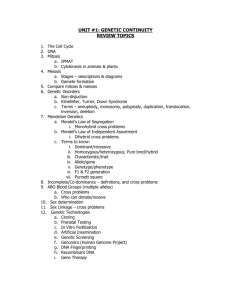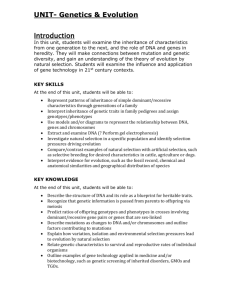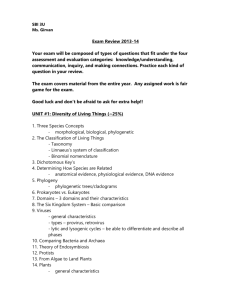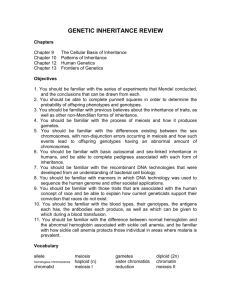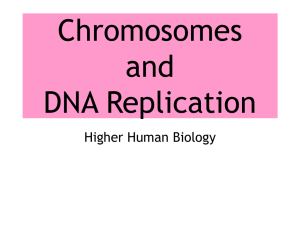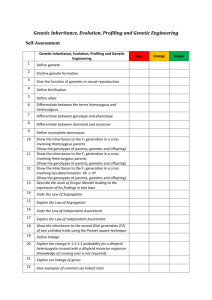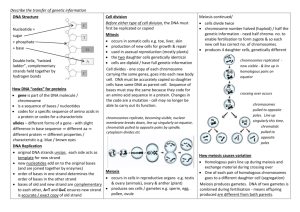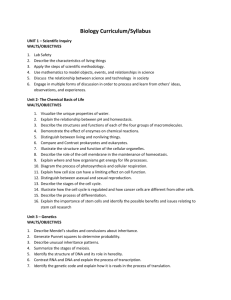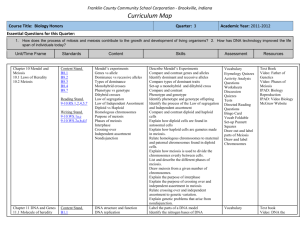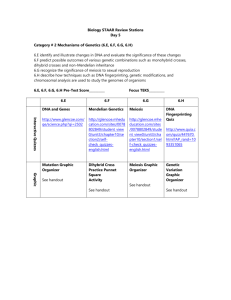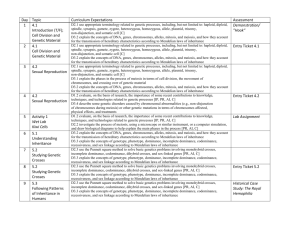Botany-3 (Paper VI) 2011
advertisement
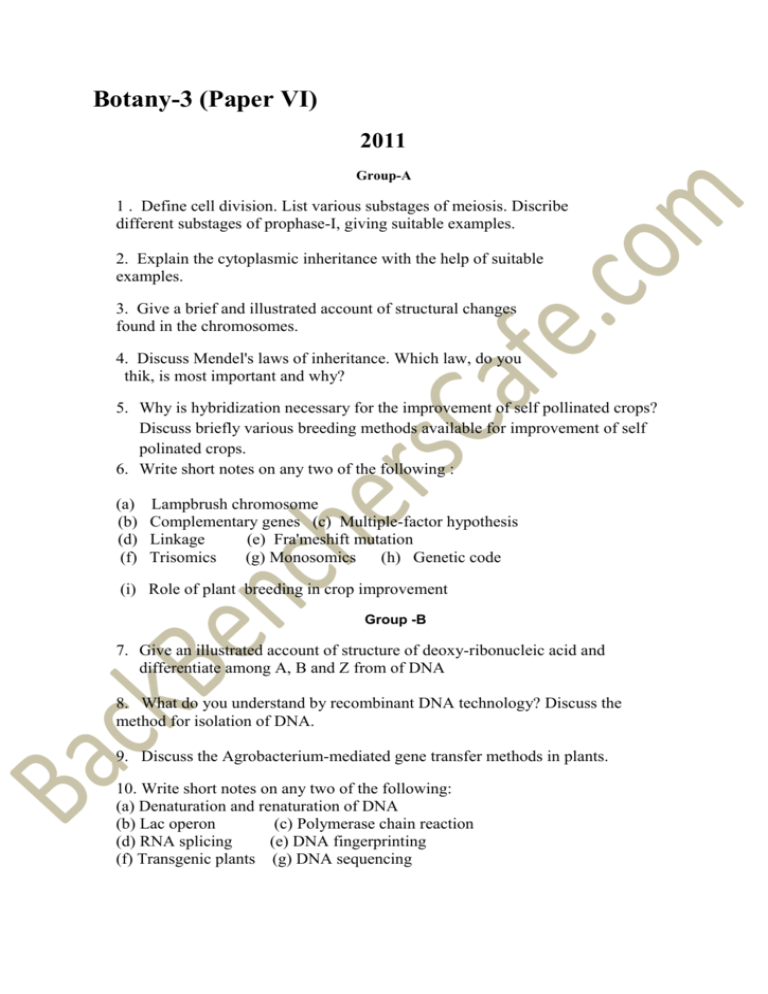
Botany-3 (Paper VI) 2011 Group-A 1 . Define cell division. List various substages of meiosis. Discribe different substages of prophase-I, giving suitable examples. 2. Explain the cytoplasmic inheritance with the help of suitable examples. 3. Give a brief and illustrated account of structural changes found in the chromosomes. 4. Discuss Mendel's laws of inheritance. Which law, do you thik, is most important and why? 5. Why is hybridization necessary for the improvement of self pollinated crops? Discuss briefly various breeding methods available for improvement of self polinated crops. 6. Write short notes on any two of the following : (a) (b) (d) (f) Lampbrush chromosome Complementary genes (c) Multiple-factor hypothesis Linkage (e) Fra'meshift mutation Trisomics (g) Monosomics (h) Genetic code (i) Role of plant breeding in crop improvement Group -B 7. Give an illustrated account of structure of deoxy-ribonucleic acid and differentiate among A, B and Z from of DNA 8. What do you understand by recombinant DNA technology? Discuss the method for isolation of DNA. 9. Discuss the Agrobacterium-mediated gene transfer methods in plants. 10. Write short notes on any two of the following: (a) Denaturation and renaturation of DNA (b) Lac operon (c) Polymerase chain reaction (d) RNA splicing (e) DNA fingerprinting (f) Transgenic plants (g) DNA sequencing 2009 GROUP-A 1. What are Mendel's laws of inheritance? Discuss with suitable example the 'Principle of Independent Assortment’. 2. Explain cytoplasmic inheritance and give few examples. which it has been reported. Elaborate the phenomenon with reference to plastic inheritance in Mirabilis jalapa. 3. Define gentic code and underline its interesting features. Briefly mention how the genetic code was deciphered. 4. Discuss how nullisomics and monosomics appear in nature. Explain with suitable diagrams the behaviour chromosomes during meiosis in a monosomic dplant. 5. What do you mean by interaction of genes? Differentiate between complementary and duplicate factors giving examples. 6. Write short notes on any three of the follwing : (a) Two-point test cross (b) Kappa particles (c) Difference between transition and transversion (e) Codon and anticodon (g) Polytene chromosome (d) translocation chromosomes (f) Induced mutatin (h) Physical mutagens (i) hybridization. GROUP-B 6. With suitable diagrams, discuss the recent concept of gene organisation in eukaryotes. 7. Write comprehesive notes on any two of the following : (a) (b) (c) (d) Euchoromatin and heterochromatin Okazaki fragments Southern blotting Agrobacterium (the natural genetic engineer) 8. What is an operon? Discuss gene regulation in prokaryote with reference to inducible and repressible systems. 9. Write short notes on any three of the following : (a) r RNA (b) DNA fingerprinting (c) T-DNA ( d) Genetic markers (e) cDNA library (f) Chromosome walking. 2008 Group – A 1. Define cell division. With the help of labelled diagrams, describe the various substages of Prophase I of meiosis. Mention the main differences between mitosis and meiosis. 2. Give a brief and illustrated account of structural changes foundin the chromosomes. 3. What do you mean by mutation ? Describe the mechanism OFmolecular basis of mutation. 4. What is aliopplyploidy ? Describe its role in crop improvement. 5. Briefly describe the different methods of plant breeding in cross pollinated crops. 6. Write short notes on any three of the following: (a) Lampbrush chromosome (b) Back cross and test cross (c) Epistatic factor (d) Multiple factors (e) Linkage (f) Frame shift's Mutation (g) Trisomics (h) Genetic code fi) Role of plant breeding in crop improvement Group – B 7. Describe the structure and replication of Deoxyribo Nucleic Acid. 8. Write.comprehensive notes on any two of the following : (a) Exons and Introns (b) Positive and Negative gene regulation (c) B-DNA and Z-DNA (d) Restriction Endonucieases 9. What is Genetic Engineering ? Discuss the steps involvd in theRecombinant DNA technology. 10. Write short notes on any two of the following: (a) t-RNA (b) Denaturation and renaturation of DNA (c) Polymerase Chain Reaction (PCR) (d) RNA-splicing(e) Vectors (f) Genetic Engineering and Crop Biotechnology

